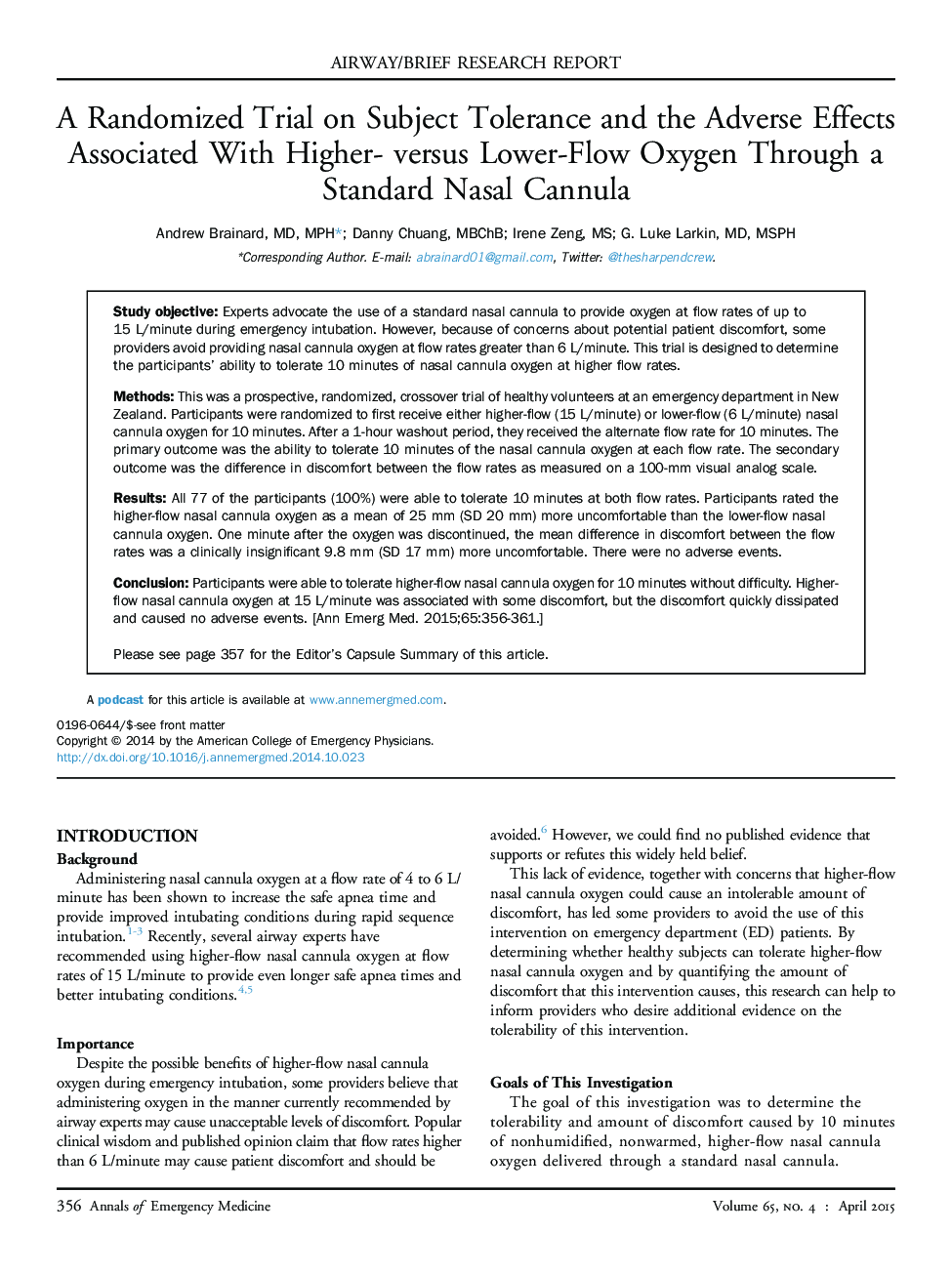| Article ID | Journal | Published Year | Pages | File Type |
|---|---|---|---|---|
| 3228784 | Annals of Emergency Medicine | 2015 | 6 Pages |
Study objectiveExperts advocate the use of a standard nasal cannula to provide oxygen at flow rates of up to 15 L/minute during emergency intubation. However, because of concerns about potential patient discomfort, some providers avoid providing nasal cannula oxygen at flow rates greater than 6 L/minute. This trial is designed to determine the participants’ ability to tolerate 10 minutes of nasal cannula oxygen at higher flow rates.MethodsThis was a prospective, randomized, crossover trial of healthy volunteers at an emergency department in New Zealand. Participants were randomized to first receive either higher-flow (15 L/minute) or lower-flow (6 L/minute) nasal cannula oxygen for 10 minutes. After a 1-hour washout period, they received the alternate flow rate for 10 minutes. The primary outcome was the ability to tolerate 10 minutes of the nasal cannula oxygen at each flow rate. The secondary outcome was the difference in discomfort between the flow rates as measured on a 100-mm visual analog scale.ResultsAll 77 of the participants (100%) were able to tolerate 10 minutes at both flow rates. Participants rated the higher-flow nasal cannula oxygen as a mean of 25 mm (SD 20 mm) more uncomfortable than the lower-flow nasal cannula oxygen. One minute after the oxygen was discontinued, the mean difference in discomfort between the flow rates was a clinically insignificant 9.8 mm (SD 17 mm) more uncomfortable. There were no adverse events.ConclusionParticipants were able to tolerate higher-flow nasal cannula oxygen for 10 minutes without difficulty. Higher-flow nasal cannula oxygen at 15 L/minute was associated with some discomfort, but the discomfort quickly dissipated and caused no adverse events.
